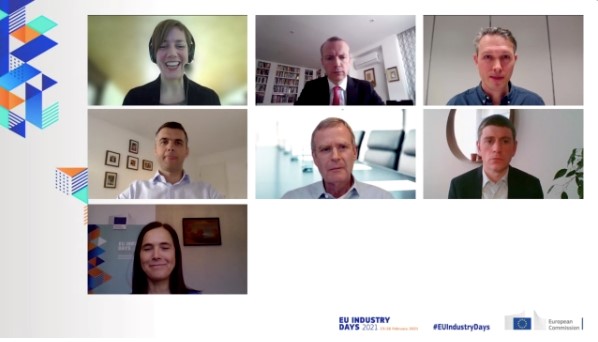Experts agree: Europe must invest in Research and Innovation to remain a global renewable energy technology leader. European policymakers must support renewable energy industry to scale up the deployment of renewable energy markets and make this technology and the whole system reliable and resilience.
European Commissioner for Internal Market Thierry Breton hosted the fourth edition of the EU Industry Days (23-26 February). European stakeholders and citizens from all over Europe established a strong dialogue on the future of European industry and the green and digital transition.
ETIPWind Chair Adrian Timbus spoke in Wednesday’s session, “Unlocking the full potential of renewables through EU industrial policy – from emerging to commercial technologies”. The panel discussed the different challenges that wind, solar, and ocean energy are facing today.
Mr Timbus focused on R&I and the role of ETIPWind in supporting European Research and Innovation (R&I) policy at EU and national level. Europe is a leader in renewable energy technologies, especially wind energy. Over half of all wind turbines installed globally are made by European companies. We have the biggest, most advanced turbines. But Chinese manufacturers are catching up. They have a much larger market which brings economies of scale and more investments in R&I. “China installed 72 GW last year, seven times as much as the EU27”, stressed Mr Timbus.
Today the European wind energy industry faces significant challenges. To become climate-neutral Europe’s energy demand needs to be at least 50% renewable electricity. This requires more than 1,000 GW of onshore and 300 GW of offshore wind by 2050. But more research is needed as new, bigger turbines are emerging in the market, product cycles become shorter, and production and installation ramps up. In addition, we need to figure out new ways to build and operate the energy system. Finally, the wind sector is working on developing new solutions to become fully circular. The goal is to become 100% recyclable thanks to R&I in new sustainable materials.
Mr Timbus also highlighted the barriers to expanding the European wind energy market. “Permitting is one of the main barriers” but “also chronic under-investment” in Europe’s electricity grids: the latest estimates put the shortfall at €100bn annually. “European institutions and energy industry must work together to set up a masterplan to plug this gap”. In addition, “the European Investment Bank and InvestEU have a key role to support riskier projects and innovative manufacturing capacity”.
ETIPWind, continues to work hard to identify common challenges and the needs of the European wind energy sector. EU support for Research and Innovation remains crucial and will remain so into the future.
Find out all the recommendation in our ETIPWind roadmap.

